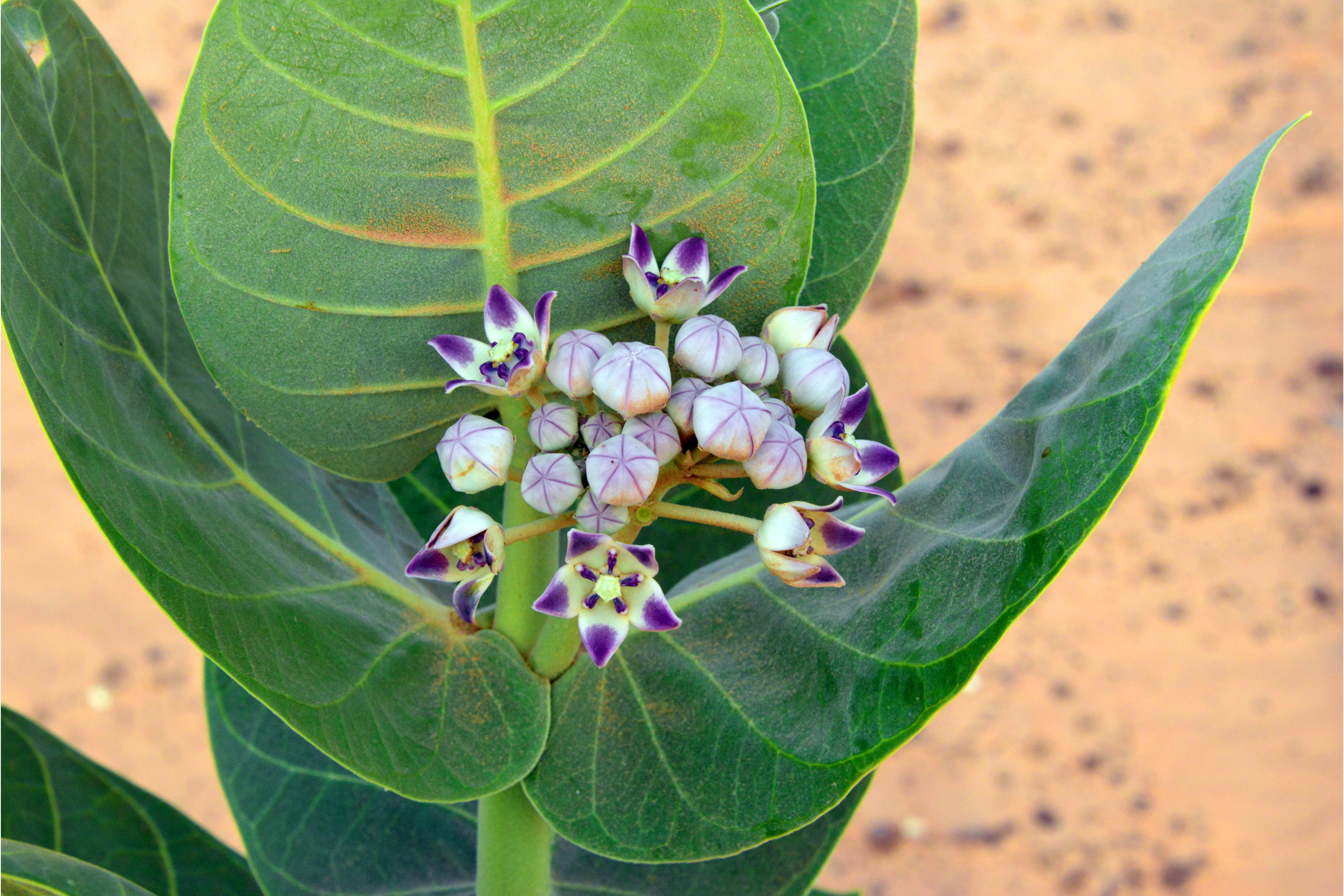Roostertree
(Calotropis procera)

Description
Calotropis procera is a species of flowering plant in the family Apocynaceae that is native to North Africa, tropical Africa, Western Asia, South Asia, and Indochina. The green fruits contain a toxic milky sap that is extremely bitter and turns into a gluey coating which is resistant to soap. Common names for the plant include Apple of Sodom, Sodom apple, stabragh, king's crown, rubber bush, and rubber tree. The name Apple of Sodom and Dead Sea Apple comes from the fact that the ancient authors Josephus and Tacitus described it as growing in the area of biblical Sodom. Some biblical commentators believe that the Sodom apple may have been the poisonous gourd (or poison-tasting gourd) that led to "death in the pot" in the Second Book of Kings (2 Kings 4:38–41). In this story, a well-meaning servant of the prophet Elisha gathers herbs and a large quantity of the unknown gourds, and casts them into the pot. After the outcry from the band of prophets, Elisha instructs them to cast flour into the stew pot, and they are saved. In 1938, botanists Hannah and Ephraim HaReuveni, authors of "The Squill and the Asphodal" (and parents of Noga HaReuveni), speculated that Jeremiah's ar‘ar/arow‘er was the Sodom apple. The fibre of the Sodom apple may have been used for the linen of the high priests. Flower and fruit The fruit is described by the Roman Jewish historian Josephus, who saw it growing near what he calls Sodom, near the Dead Sea: "...as well as the ashes growing in their fruits; which fruits have a color as if they were fit to be eaten, but if you pluck them with your hands, they dissolve into smoke and ashes." (Whiston 1737: Book IV chapter 8 section 4) Sodom apple is listed in the Mishnah and Talmud. The fibers attached to the seeds may have been used as wicks. However the Mishnah forbids this for the Sabbath: "It may not be lighted with cedar-bast, nor with uncombed flax, nor with floss-silk, nor with willow fiber, nor with nettle fiber. Sabbath Chapter 2" In his Biblical Researches in Palestine, American biblical scholar Edward Robinson describes it as the fruit of the Asclepias gigantea vel procera, a tree 10–15 feet high, with a grayish cork-like bark called 'osher by the Arabs. He says the fruit resembled "a large, smooth apple or orange, hanging in clusters of three or four." When "pressed or struck, it explodes with a puff, like a bladder or puff-ball, leaving in the hand only the shreds of the thin rind and a few fibers.
Taxonomic tree:







